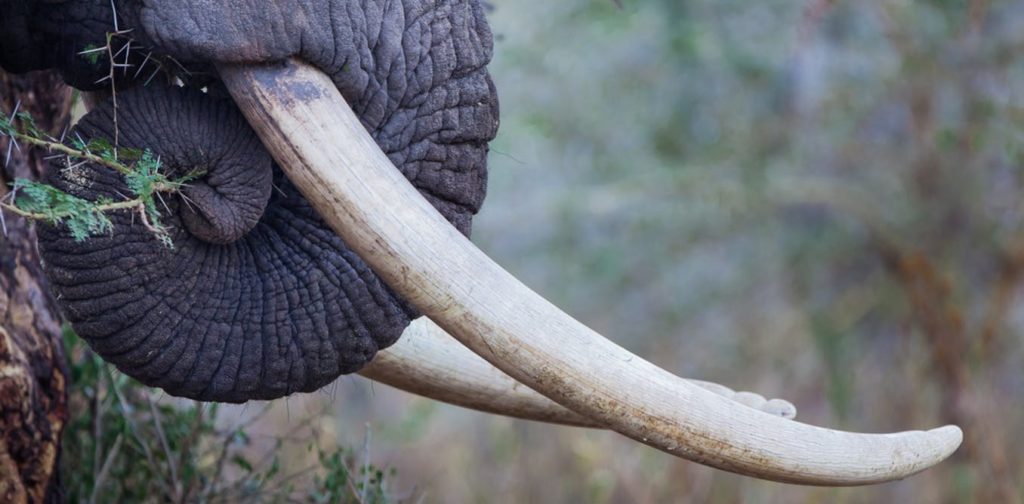How to Overcome Fierce Debates about Banning All Trade in Ivory
ANIMAL RIGHTS - VEGETARIANISM, 30 Apr 2018
Duan Biggs, Carly Cook, Kent Redford and Matthew H. Holden – The Conversation
25 Apr 2018 – Africa’s elephants are under siege from rampant poaching for their ivory. Everyone agrees that Africa’s elephants need protecting from the ongoing slaughter. But countries with wild elephant populations (range states) disagree vehemently on a central policy issue: should we ban all trade in ivory or not?
Debates on ivory trade dominate the world body that determines which wildlife products can and cannot be traded. Discussions at the Conferences of the Parties (CoP) of the Convention of the Trade in Endangered Species (CITES) can become fierce, consume scarce conservation resources and create a combative environment among elephant conservationists and policymakers.
Kenya – along with most central and West African countries – argues that prohibiting all trade in ivory is the only way to protect elephants. The supporters of ivory prohibition also advocate for the public destruction of ivory stockpiles to stigmatise ivory consumption.
The opposite position is held by southern African countries such as Namibia, South Africa and Zimbabwe. They criticise ivory prohibition arguing that trade bans and stockpile destruction have a perverse effect of reducing supply, increasing prices and therefore incentivising further poaching. These pro-trade countries also argue that revenue from regulated ivory sales can be put to good use. The money can be used to finance the protection of elephants and their habitats and provide socio-economic benefits to communities who bear the costs of living with elephants.
Prohibition countries strongly oppose this view and argue that any legal trade facilitates laundering of illegally poached ivory and stimulates further demand, therefore increasing poaching.
This prohibition position has more policy momentum. The US, China, and the UK have all introduced domestic ivory bans in recent years. Yet, the fierce debates continue and the policy gridlock persists.
The result of these dramatically divergent positions is an inability to develop an evidence based consensus policy. We have argued in two publications that overcoming the deadlock needs understanding of what drives the two divergent views. This can only happen if there’s a recognition that different values are at play. And that they influence the way in which evidence is interpreted.
Values also affect how people view trade-offs – what people are willing to give up in exchange for something else. But trade-offs are emotive when they pit money against sacred moral values – what are known as “taboo trade-offs”. These are very evident in the ivory debate.
Taboo trade-offs
Some elephant conservation stakeholders view any trade in elephant products as morally unacceptable, akin to trading human body parts. The ivory trade debate pitches this value against the secular value that ivory is a source of conservation revenue. The taboo trade-off represented in this debate explains why it has been so long-standing, contentious and impassioned and remains unresolved.
Taboo trade-offs can only be managed through a process that involves divergent views and stakeholder values being discussed and evaluated in a structured way that incorporates evidence.
Such an approach has the potential to increase awareness of the trade-offs, promote discussion of what is acceptable, and potentially identify and strengthen successful policy and management compliance.
Discussions among small groups of key stakeholders help to build trust and help understand the perspectives of others. This approach has been successful at resolving other long standing conflicts. The best, and most recent example, is the negotiation of the Paris Climate accord.
Other examples include the peace deal in Colombia and the end of apartheid in South Africa. In both cases the discussions yielded more than having open debates in the media.
Adam Kahane, who facilitated discussions in both South Africa and Colombia, authored two books. One was on transformative scenario planning and collaborating with the enemy. He details how small group processes worked in situations of conflict.
African range states
Our suggestion isn’t that discussions on ivory should take place outside of CITES. Rather, we believe that space is provided to African elephant Range States, the ultimate custodians of Africa’s elephants, to take ownership and work through such a process. This will feed into and contribute to CITES policy decisions.
The African Range State Dialogues provide an example of how this could work. These dialogues brought together African range states in a forum where they could discuss and debate issues on elephant conservation with less external pressure than at CITES CoPs. The outcomes of these dialogues fed into CITES policy decisions.
Discussion on the ivory debate could also include the consideration of other pressing threats to elephants – including habitat loss and human wildlife conflict. Such discussion could help identify novel solutions to tackle threats facing Africa’s elephants that are acceptable to a broader group of African range states.
We believe that this approach will help ensure that policies and actions to conserve Africa’s elephants are more acceptable and sustainable. Moreover, that it incorporates the values and perspectives of African governments and societies responsible for, and that bear the costs of, conserving elephants.
_________________________________________
 Duan Biggs – Senior Research Fellow Social-Ecological Systems & Resilience, Griffith University
Duan Biggs – Senior Research Fellow Social-Ecological Systems & Resilience, Griffith University
 Carly Cook – Lecturer Head, Cook Research Group; School of Biological Sciences, Monash University
Carly Cook – Lecturer Head, Cook Research Group; School of Biological Sciences, Monash University
 Kent Redford – Adjunct Research Professor, University of New England, United States
Kent Redford – Adjunct Research Professor, University of New England, United States
 Matthew H. Holden – Lecturer, Centre for Applications in Natural Resource Mathematics, The University of Queensland
Matthew H. Holden – Lecturer, Centre for Applications in Natural Resource Mathematics, The University of Queensland
Republish The Conversation articles for free, online or in print, under Creative Commons license.
Go to Original – theconversation.com
DISCLAIMER: The statements, views and opinions expressed in pieces republished here are solely those of the authors and do not necessarily represent those of TMS. In accordance with title 17 U.S.C. section 107, this material is distributed without profit to those who have expressed a prior interest in receiving the included information for research and educational purposes. TMS has no affiliation whatsoever with the originator of this article nor is TMS endorsed or sponsored by the originator. “GO TO ORIGINAL” links are provided as a convenience to our readers and allow for verification of authenticity. However, as originating pages are often updated by their originating host sites, the versions posted may not match the versions our readers view when clicking the “GO TO ORIGINAL” links. This site contains copyrighted material the use of which has not always been specifically authorized by the copyright owner. We are making such material available in our efforts to advance understanding of environmental, political, human rights, economic, democracy, scientific, and social justice issues, etc. We believe this constitutes a ‘fair use’ of any such copyrighted material as provided for in section 107 of the US Copyright Law. In accordance with Title 17 U.S.C. Section 107, the material on this site is distributed without profit to those who have expressed a prior interest in receiving the included information for research and educational purposes. For more information go to: http://www.law.cornell.edu/uscode/17/107.shtml. If you wish to use copyrighted material from this site for purposes of your own that go beyond ‘fair use’, you must obtain permission from the copyright owner.
Read more
Click here to go to the current weekly digest or pick another article:
ANIMAL RIGHTS - VEGETARIANISM:
